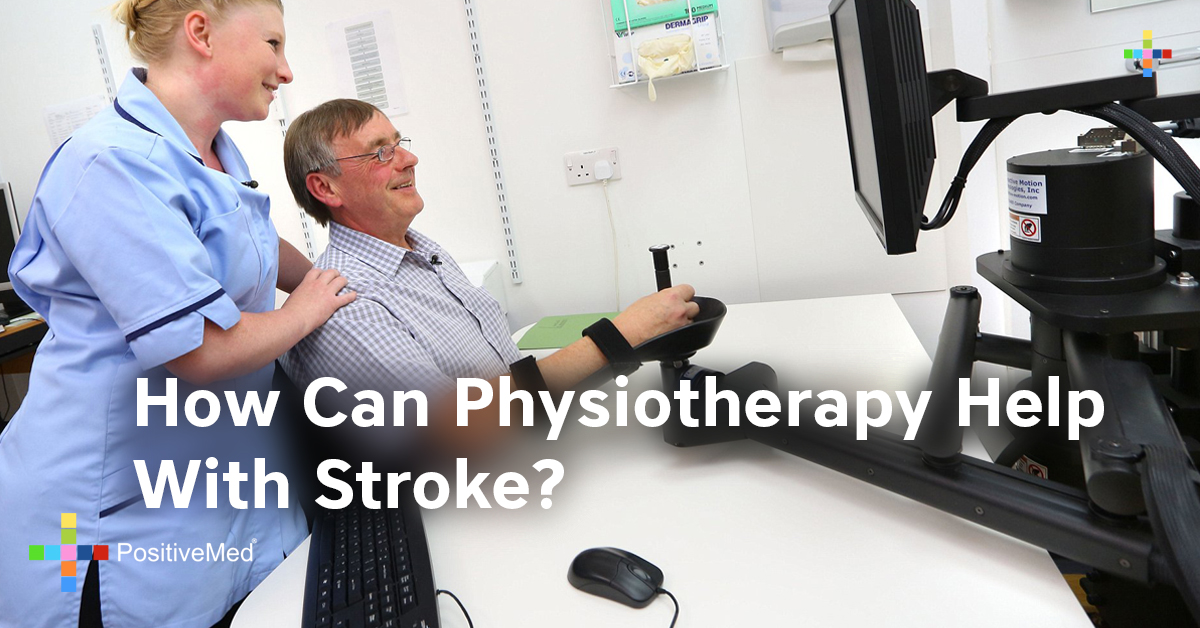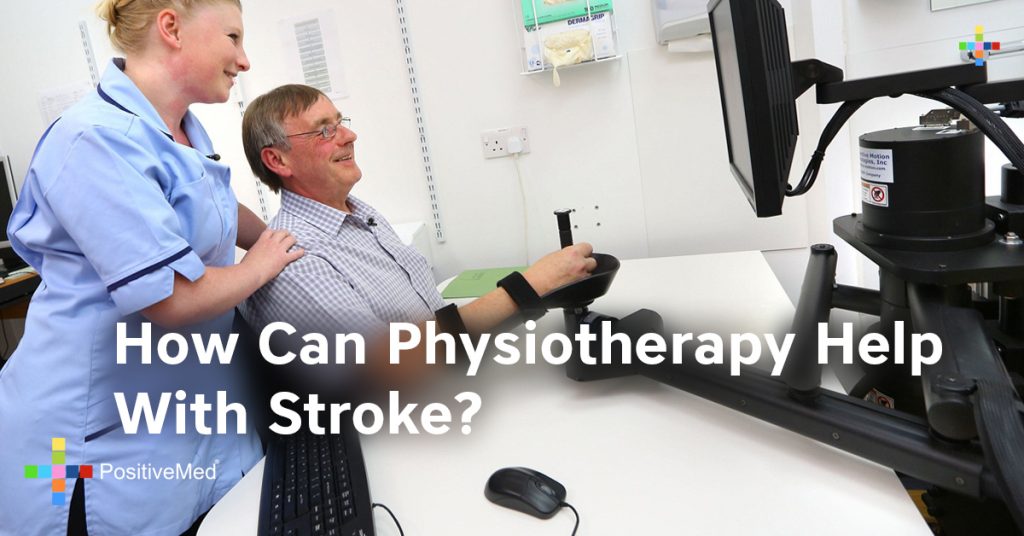Suffering a stroke adversely affects your mobility. The stroke makes it difficult if not impossible for the affected person to move limbs and facial muscles. It even makes it difficult to perform simple bodily functions such as swallowing. The stroke patient is often unaware of what is going on around them. This article examines how physiotherapy can help patients recover from a stroke.

What is a Stroke?
A stroke can be defined as a sudden collapse of a section of the brain after blood flow to the affected part of the brain is cut off. This mainly results from the presence of a blood clot in the patient’s bloodstream.
A stroke can occur to a person at any age but it is more prevalent in men and people aged 55 years and above. It can also run in one’s family or result from lifestyle factors such as drinking alcohol, diet, poor weight management, smoking, sedentary lifestyles, lack of exercise, and in some cases for no apparent cause.
The World Health Organization (WHO) defines stroke as an accident in the brain that results in rapidly developing clinical symptoms of disturbance to the cerebral function. The symptoms may last for 24 or more hours and could potentially lead to death and could be due to factors such as cerebral infarction, subarachnoid hemorrhage, and intracerebral hemorrhage.
According to WHO, each year, more than 15 million people worldwide suffer a stroke. Of the 15 million stroke victims, 5 million die while another 5 million remain permanently disabled. A Global Burden of Disease Study done in 2010 showed that stroke is the 2nd leading cause of death worldwide and the 3rd leading cause of disability and premature death.
A stroke can either be mild or severe. The symptoms of a stroke also vary depending on the severity of the stroke. In most cases, the condition causes a wide range of upper limb impairments including the following:
• Lost sensations
• Contracture
• Coordination problems
• Weakness
• Altered muscular power
• Swelling
• Altered muscle tone
• Hand and arm dysfunction
• Loss of facial muscle usage.
How Physiotherapy Helps Stroke Survivors
With effective treatment, you can recover from a stroke. Once oxygen is sufficiently restored to your brain after suffering a stroke, the body starts the process of recovering from the damage caused by the stroke and restore muscle function. Your recovery process will largely depend on post-stroke rehabilitation, which usually begins 24 hours after the stroke happens. Physiotherapists who specialize in stroke and other health conditions help to stimulate the affected nerves and muscles to prevent stiffness and maintain blood circulation.
Physiotherapy plays a major role in post-stroke rehabilitation processes. They provide tailored treatment that is specific to your condition to help you regain mobility and independence. A physiotherapist will help you regain strength and muscle control and in collaboration with continence nurses help you recover from problematic issues such as lost bladder control. They’ll support you throughout the rehabilitation process to ensure that you get back to your everyday life.
In the US, physiotherapy is the third largest sector of healthcare after nursing and physicians. Physiotherapists work in hospitals, private clinics, and other healthcare facilities. There are many physiotherapists today who specialize in stroke and other neurological trauma conditions. They help patients to recover and re-learn difficult bodily movements that may have been lost after suffering a stroke. They’ll even help you avoid further complications that could potentially derail the recovery process. For instance, issues such as improved balance and coordination are critical to a recovering stroke patient.
The primary goals of physiotherapy rehabilitation to a stroke patient are to prevent complications, minimize the level of impairment, and maximize the function of the patient’s muscles and coordination. To achieve this goal, physiotherapists conduct an early assessment of the patient’s conditions using standard evaluations and assessment tools. They employ early evidence-based interventions depending on the patient’s needs before taking the patient through a multidisciplinary rehabilitation process.
Post-Stroke Physiotherapy
Physiotherapy for stroke comes with customized plans that suit each individual patient. During the first appointment, the physiotherapist will examine your body, refer to the doctor’s notes, and talk to your caregiver or loved ones about symptoms or any setbacks that you may be experiencing. This information will help the physiotherapist to develop the right plan for you with a focus on helping you restore movement and avoid complications.
The physiotherapy exercises will revolve around the goals the therapist will have set for you. The American Physical Therapy Association (APTA) advises patients or their caregivers to ask any pertinent questions they may have especially on recovery goals and the treatment timetable. Being informed of the entire process ensures that everyone is on the same page and the patient is well informed on what to expect from the treatment.
The physiotherapist may, for example, start with basic tasks and exercises such as moving safely from the bed to a chair ensuring that your impaired arms are protected from injury. The simple tasks will gradually progress to physical exercises meant to improve balance and help you to re-learn basic movement and coordination skills. The goal is to retrain the brain to perform basic but important functions such as walking and grasping objects. The physiotherapist uses specialized stroke recovery tools such as the SaeboFlex, a glove that helps you in hand extension and grasping.
With continuous support from the physiotherapist, you’ll eventually meet your recovery goals. All along the process, the physiotherapist will observe and record progress made in the recovery process.
Physiotherapy Treatment Techniques for Stroke Patients
Physiotherapists employ a wide range of treatment techniques to help stroke patients regain normal use of their limbs and muscles. Here are some common treatment techniques used by physiotherapists on stroke patients:
• Strength training exercises. Medical evidence proves that strength training can significantly improve the functioning of the upper limbs while reducing pain on a patient suffering from a stroke.
• Orthotics. This is a form of therapy that uses wrist-hand motions. It is as effective as manual exercises in helping stroke patients improve coordination and regain lost movements in their hands and arms. When a patient uses orthosis therapy for a long time, he or she may require appropriate treatment to prevent additional problems such as clenched fist and ADL issues.
• Gaming therapy. Computer gaming exercises that are goal-oriented have been proven to reduce impairment in the upper limbs in patients who have survived a stroke.
• Virtual Reality therapy. Virtual reality is quite effective in recovery from impaired upper limbs and other motor-related disabilities.
• Mirror therapy. Physiotherapists have demonstrated the efficacy of this technique in restoring motor control and function among patients with stroke-related motion and coordination problems.
Physiotherapy treatment for stroke patients aims at preventing upper limb, especially shoulder, pain and if not possible to eliminate the pain, finding ways to manage the discomfort. In extreme or severe impairment, treatment focuses on keeping the patient in a pain-free, comfortable state with mobile functions at least in the hand and arm. The treatment focuses on proper positioning to ensure the patient rests comfortably at all times.
Proper care in the early days after a stroke is important to prevent muscle and joint stiffness. If you are confined to a bed, the physiotherapist will regularly be changing your sleeping position to help you improve your balance and posture and of course, keep you feeling more comfortable. Patents with one-side paralysis due to stroke will need correct bed positioning to avoid spasm or other injuries. The patient will also need special mattresses to prevent the occurrence of bedsores. Stroke patients who are unable to move have to be given chest physiotherapy exercises to ensure that their lungs are safe from infections. It is also important for the patient to sit up as often as possible to prevent blood clots in the legs and improve breathing.
The more a more active a stroke patient becomes after a stroke, the quicker he or she recovers. Physiotherapy guidelines recommend that a patient going through rehabilitation in a hospital should get at minimum 45 minutes of physiotherapy every day.
After you are medically stable, your next goal should be to regain movement as soon as possible. You can use controlled treadmill exercises or any other intensive training program under the supervision of a physiotherapist. This type of physical training will help to improve your full-body fitness. If one of your arms is restrained, you’ll need to focus more on the affected arm during your training exercises. The major problem most stroke patients face is weak limbs which can be improved with a regular regimen of strengthening exercises. Strength exercises help to build stamina while stretching exercises help to prevent joint and muscle stiffness.
Conclusion
A stroke severely affects the connection between your brain and most of the body’s muscles. This is why the condition results in loss of mobility. However, the loss of movement is never permanent and can be regained with the help of physiotherapy exercises. Recovery to a large extent depends on consistent physiotherapy treatment.
Author Bio:
Russell Thompson
Since he established his practice in 1983, Russell Thompson has provided a top-notch physio service in Werribee, Australia. He works with a team of professionals to provide an integrated program for their clients while taking physiology, anatomy, and biomechanics into account.
References







